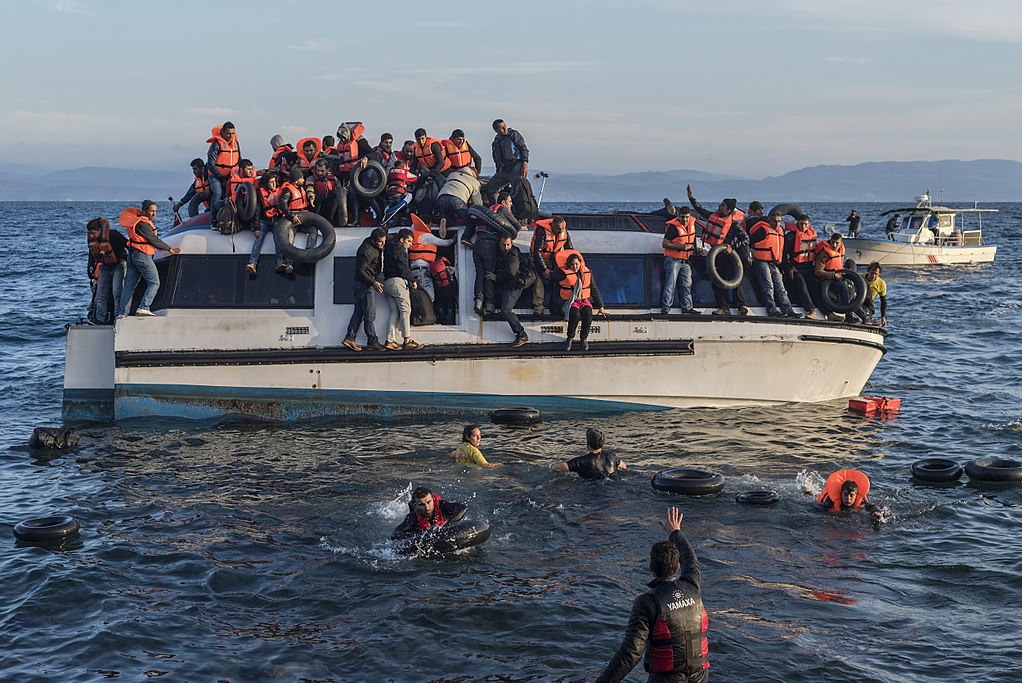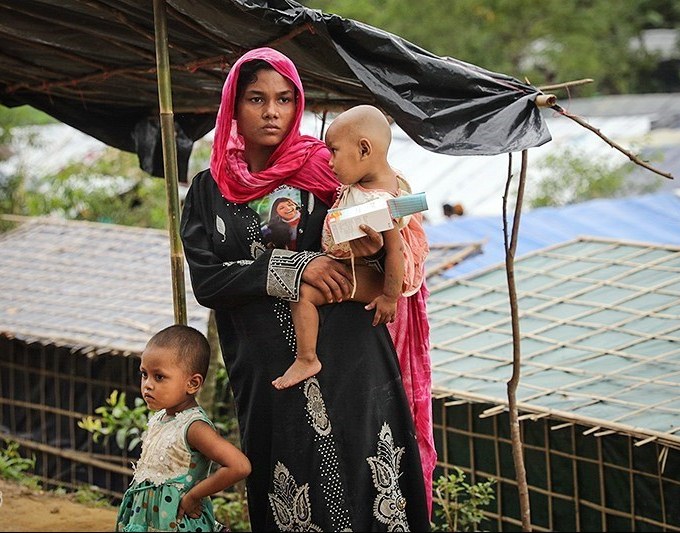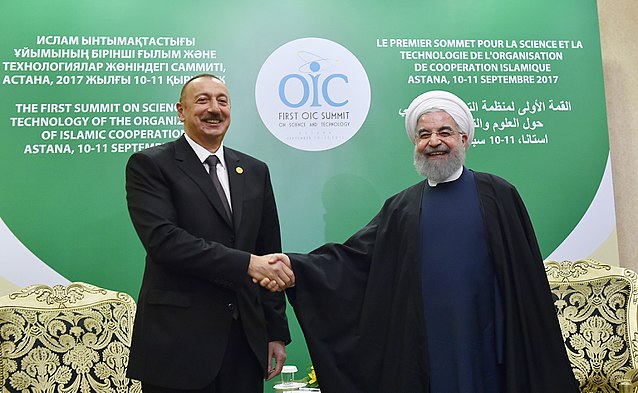"DAĞLIK KARABAĞ SAVAŞINDA AĞDAM'DAYDIM! (YAŞANMIŞ GERÇEK BİR HİKÂYE)" - TURKISH NEWS -24.02.2018
Blog No : 2018 / 14
26.02.2018
Turkish News (24 Şubat 2018)
Dağlık Karabağ, hukuken Azerbaycan sınırları içinde bulunan, ancak fiilen Ermenistan tarafından işgal edilmiş olan bir bölge. Burada yaşayan Azerbaycanlıların tamamı ya öldürülerek, ya da göçe zorlanarak yok edilmiştir.
Karabağ, Azerbaycan’ın en güzel yerlerinden birisidir. Karabağ’ın, zengin doğal ve stratejik önemi vardır. Bugün Ermenistan işgali altında bulunan bölge tarih boyunca Türklerin yaşadığı bir mekân olarak temayüz etmiştir.Ermenilerin 1988’de Karabağ’ı Ermenistan’a bağlamak üzere başlayan müdahalesi 1992’de Ermenistan ve Azerbaycan arasında genel savaşa dönüşmüştür. Sürgünler ve savaş sürecinde hile, baskı ve Rus desteğinden yararlanarak Karabağ’da yaşayan Türk halkını soykırıma tabi tutan Ermeniler, planlarını gerçekleştirme, emellerine varma adına bölgede birçok katliam yapmıştır.
Savaşta Ermeniler tarafından bölgede işlenen en acımasız uluslararası suçlardan biri, 26 Şubat 1992 tarihinde Ermeniler, Rus askerleri tarafından silahsızlaştırılan Hocalı kentini abluka altına almışlar, her türlü tehcire maruz bırakmış ve kenti tamamıyla yok etmişlerdir. Hocalı’ya saldırarak kenti terk edememiş suçsuz ve silahsız masum insanları acımasız şekilde katletmiştir. Cesetlerinin birçoğunun yakıldığı, gözlerinin oyulduğu, kulaklarının, burunlarının ve kafaları ile vücutlarının çeşitli uzuvlarının kesildiği ve daha birçok akıl dışı işkencelere maruz kaldıkları görülmüştür. Ermenilerin silahsız sivil halka yönelik gerçekleştirdiği bu katliam, açıkça, bir etnik grubun yok edilmesi amacıyla gerçekleştirilmiştir.
Ermeniler Hocalı'da, 83 çocuk, 106 kadın ve 70'den fazla yaşlı dahil olmak üzere toplam 613 kişiyi katletti. Yaşanan sadece insanların katledilmesi değildi. Cesetler üzerinde yapılan incelemelerde bir çoğunun yakılmış olduğu, gözlerinin oyulduğu tespit edildi. Hamile kadınlar ve çocukların da bu vahşete maruz kaldığı belirlendi. Canlı şahitlerin ifadeleri ve basın organlarında yayımlanan film ve resimlerde görünen insanlık dışı cinayetler, Ermenilerin soykırım amacıyla bu operasyonu gerçekleştirdiğini göstermektedir.
1980’lerin sonlarından itibaren Kafkasya’yı yakından izleyen ve Hocalı faciası sırasında bölgede bulunan ABD’li gazeteci-yazar Thomas Goltz, olayın “Bölgede yaşayan Azerbaycan Türklerine karşı toptan imha amacı taşıdığını, o nedenle apaçık soykırım olduğunu” yazmıştı.
Karabağ’ı işgal eden Ermenilerin yüzünü Ağdam’a çevirmeleri an meselesiydi. Karabağ katliamlarından kaçarak Ağdam Rayonuna sığınan göçmenler henüz katliamların acısını atlatamamış, buraya da saldırırlar mı korkusuyla uykularından oluyorlardı. Nitekim Hocalı Soykırımında kan kaybeden Azerbaycan Ağdam’da tarihinin en kanlı savaşını yaşamaya hazırlanıyordu. Hocalı’da gerçekleşen kan donduran soykırım, Ağdam sokaklarını korkuyla titretiyor, insanlar çocuklarının gözlerinin içine bakmaktan çekiniyordu. Günler içinde Ağdam’da çetin bir savaş yaşanacak ve şehir yerle bir olacaktı.
Azerbaycan’ın İşgal Edilen Bölgeleri ve İşgal Tarihleri
1988 yılında silahlı çatışmaya dönen Azerbaycan-Ermenistan sorunu kısa bir sürede Azerbaycan ve Ermenistan’ın bir bölgesel savaşına dönüşmüş ve Ermenistan silahlı kuvvetleri bu çatışmalar neticesinde 1988 yılından ateşkesin yapıldığı 12 Mayıs 1994 tarihine kadar Dağlık Karabağ’ın tamamı da olmak üzere toplam 890 rayon, köy, kasaba ve yerleşim biriminden ibaret Azerbaycan topraklarının % 20’sini işgal etmiştir. Dağlık Karbağa’da Azerbaycanlılar 2 şehir, 1 kasaba ve 53 köyde meskunlaşmışlardı. Ermenistan silahlı kuvvetleri; 18 Şubat 1992’de Hocavend’i, 25 Şubat 1992’de Hocalı’yı, 26 Şubat 1992’de Şuşa’yı, 18 Mayıs 1992’de Laçin’i, 4 Nisan 1993’de Kelbecer’i, 23 Temmuz 1993’te Ağdam’ı, 24 Ağustos 1993’te Fuzuli, 27 Ekim 1993’te Zengilan’ı, 26 Ağustos 1993’te Cebrayil’i, 31 Ağustos 1993’te Kubatlı’yı işgal etmişlerdir.
Ermeniler, Azerbaycan köylerine otomatik silahlar, roketatar ve bombalarla saldırıyor. Sovyet Kızıl Ordu askerleri ise Ermeni ablukası ve olaylar karsısında aciz ve seyirci kalıyordu. Namluların çevrildiği Azerbaycan köylerine yardıma gitmeyen, kurdukları barikatlarda kımıldayamayan Kızıl Ordu birlikleri ve Sovyet tankları. Esirler, yaralılar, kaçırılıp rehin tutulan, öldürülen Azerbaycanlıları ve dünyanın duyamadığı imdat çığlıkları...
Dünyanın sağır olduğu çığlığı duymak istemiyordu, Ermenilerin terör havası estirdiği Azerbaycan şehir ve köyleri tam bir panik içindeydi. Evleri yakılan, kurşunlanan çaresiz insanlar, dünyaya seslerini duyuramamaktan yakınıyorlardı. Türk şehir ve köylerini basan ve yakıp yıkan Ermeniler, yaşlı çocuk bakmaksızın cinayetlerini sürdürüyorlardı.
Dağlık Karabağ'a Yolculuk
Azerbaycan ve Ermenistan Savaşı'nda, Ermeni diasporası, lobisi ve birçok ülke Ermenistan'a para ve silah yardımı yapıyordu. Biz Irak Türkleri, kendimizi Azerbaycanlıların öz kardeşi, kara gün dostu olarak görüyoruz,onlarda bizi öyle görüyor. Azerbaycan'ın bu zor, sıkıntılı, çetin gününde, kardeşlerimiz için bir Irak Türkü ve bir hekim olarak ne yapabilirim diye düşündüm. Dost, arkadaş, çevre ve kuruluşlar ile ilişkiler kurarak Karabağ'a ilaç ve tıbbi malzeme toplamaya karar verdim. İlaç ve tıbbi malzeme yardımını Karabağ’a ulaştırmanın yollarını aramaya başladım. O tarihte İsveç'in eğitim, kültür, önemli tıp ve sanayi kenti olan Umeå'da yaşıyordum. İlaç ve tıbbi yardım malzemeleriyle Azerbaycan'ın Dağlık Karabağ’a doğru yola koyuldum. Umeå'dan gemi ile Finlandiya'nın Vasa şehrine geçtim, oradan da tren ile Finlandiya'nın Başkenti Helsinki'ye, oradan da Rusya'nın ikinci büyük şehri, kuzeyin Venedik'i ve aslında bir açık hava müzesi olarak bilinen St.Petersburg'a vardım.
Sovyetler Birliği yeni dağılmış ve ülkenin dağılması sırasında ortaya çıkan kargaşa ortamı sürüyordu. St.Petersburg'den Bakü'ye uçak bileti almak için çok çalıştım, 5 gün uğraştım ama başaramadım.St. Petersburg ile Bakü arası mesafe 3,023,5 km. Çaresizdim, ne yapacağımı bilemiyordum. Ve birden aklıma bir fikir geldi. St. Petersburg'da Azerbaycanlıların yoğun yaşadığı bölgeye gittim. Vahid adında bir Azerbaycan Türkü ile tanıştım ve durumu kendisine anlattım. Daha sonra İlaç ve tıbbi yardım malzemeleriyle Vahid beni arabası ile St.Petersburg Pulkovo Havalimanı'na götürdü. Havalimanında küçük bir ayakkabı tamiri dükkanına gittik, tanıdığı hemşehrisi Azerbaycan Türkü dükkan sahibine benim için Bakü'ye bir uçak bileti bulmasını istedi. Dükkan sahibi pasaportumu aldı, 15-20 dakika sonra elinde uçak bileti ile geri geldi. Bu bir şaka mı? O anda ne kadar sevindiğimi bilemezsiniz…
3 saat 40 dakika süren, berbat bir Rus yapımı Tupolev tipi uçak, uçuş emniyeti hak getire cinsinden maceralı bir uçak yolculuğundan sonra Azerbaycan Cumhuriyeti'nin başkenti Bakü'ye Bine Uluslararası Havalimanı'na (Yeni adı Haydar Aliyev Uluslararası Havalimanı) indik. Unutmadan Vahid, Bakü'de erkek kardeşinin yaşadığını, adının Vagif olduğunu belirterek, Kardeşinin adresini de bana vermişti. Kardeşinin de bana yardımcı olacağını söylemişti. Havaalanından taksiye bindim ve adresi taksi şoförüne verdim. Taksiden Vagif'in evinin önünde indim, kapıya vurdum. Kapıyı Vagif açtı, hemen aldı beni içeriye ve ailesi ile tanıştırdı. Kendisine ilaç ve tıbbi malzemenin evinde kalmasını ve beni de bir otele yerleştirmesini talep ettim, ısrarlarıma rağmen kabul etmedi.
Azerbaycan halkının misafirperverliği kendi tarihi kadar eskidir. Azerbaycan halkı binyıllar boyunca, ülkesine gelen, toprağına ayak basan insanları, doğma yakınları gibi kabul edip, evindeki en leziz yemeği misafir önüne koyar.Halkı içten ve samimi ayrıca misafirperver bir kültüre sahiptir.
Bakü'de bazı bakanlıklar, kuruluşlar ve şahsiyetler ile görüştüm. Bu görüşmenin sonucunda Vagif ile birlikte ilaç ve tıbbi malzemeyi de yanımıza alarak savaş hattı olan Azerbaycan'ın Karabağ bölgesindeki Ağdam'a doğru yola koyulduk.
Azerbaycan'ın Gözbebeği Ağdam'a Bomba Yağıyor
Ermeniler 1991'de başlattıkları saldırılarla 18 Şubat 1992’de Hocavend’i, 25 Şubat 1992’de Hocalı’yı, 26 Şubat 1992’de Şuşa’yı, 18 Mayıs 1992’de Laçin’i işgal etti. Azerbaycan'daki siyasi istikrarsızlığın Karabağ'daki savaş üzerinde büyük zararı oldu.
Uluslararası tepkilere rağmen Ermeniler tek taraflı ateşkeslerini iptal edip, komuta kademesi neredeyse işlemez hale gelmiş Azerbaycan ordusuna karşı tekrar saldırıya geçtiler. Ermenilerin yeni hedefi Karabağ'ın doğusunda yer alan ve civarıyla birlikte nüfusu yaklaşık 150 bin olan Ağdam şehriydi.
Toplam bin 154 kilometre kare büyüklüğünde olan Ağdam şehri, Bakü'den 365 km uzaktadır. Ağdam 18. yüzyılda kuruldu ve 1928'de şehir statüsü aldı. Ağdam bölgesi Azerbaycan'ın eski, büyüleyici doğanın toprağı olan Karabağ'ın merkezinde ve Karabağ dağ zincirinin kuzeydoğu eteklerinde bulunmakta.
1992 yılının Kasım ayıydı, Bakü'den Ağdam'a hareket eden bir otobüse bindik. Yaklaşık 7 saat süren yolculuktan sonra Ağdam'ın yakınlarında bir yerde indik. O tarihte Ağdam şehri Ermeni kuşatması altındaydı. Bir taksiye bindik,Ağdam'a yaklaştığımızda akşam olmak üzereydi, havan topu, tank ateşi ve füze ile Ağdam bombalanıyordu,şehirde bulunan halk da, can havliyle, panik içerisinde koşuşturduğunu, bombaların hedefi olmamak için, bulabildikleri her türlü vasıta ile şehri terk ediyordu. Ermeniler, halkın şehri terk etmesi için özellikle sivil yerleşim yerlerini acımasızca ağır bir şekilde bombalıyordu. Hayatımda ilk defa gerçek savaşı yaşıyordum! Bu görüntüyü hayatımın sonuna dek unutamam.
Evet… Gerçek bir savaşta, ölüm her yeri kapladığında ölmek değil yaşamaktır tesadüf. Cesaret tehlikeyi göze almaktır ve aklın emaresidir. Savaş bir tehlike alanıdır, onun için cesaret savaşçı erdemlerin başında gelir. Cesaret, ister kişinin bünyesinden ve karakterinden, ister ölümden korkmamasından, ister alışkanlıktan ileri gelsin, tehlikeyi umursamazlık. Bu sürekli bir haldir. Cesur kişi felâket hallerinde çözüm üretir, şuurlu risk alır ve aklının gösterdiği hedefe giderken risklere katlanır. Korku diye bir kelime hayat sözcüğümde yoktur. Ailem de beni böyle yetiştirdi.Öleceksen de şerefli, bir gaye, bir ideal uğruna öl, ki insanlar seni hatırlasın!
İran-Irak Savaşı'nda kardeşim Nazar Çavuşoğlu 7 Şubat 1988 yılında savaş alanında ülkesini savunurken şehit düştü. Kardeşim şehit düşeceğini biliyordu, en ön cephede savaşıyordu, savaş sırasında birkaç defa yaralanmıştı.Askerden son izne geldiğinde arkadaşlarına “ En ön cephede savaşıyoruz. Muhtemelen bu son gidişim olur, şehit olup öyle dönerim” demişti. kardeşimin şehit olacağı içine doğmuştu. Aynı yılın Mart ayında, yani bir ay sonra ağabeğim Nebil Çavuşoğlu İranlılara esir düştü. 11 yıl İran'da esir kaldı. Cesaret, haklı olarak, erdemlerin en değerlisidir;
çünkü diğer tüm erdemler ona dayanır. Cesurlar bir kez ölür, korkaklar bin kere!
çünkü diğer tüm erdemler ona dayanır. Cesurlar bir kez ölür, korkaklar bin kere!
Ağdam cephe hattına ulaşmak için, şehrin diğer yakasına geçmemiz gerekiyordu. Şehir Ermeni kuşatması altındaydı, yani Ağdam'ın içinden geçmekten başka çaremiz yoktu, fakat şehir ağır bir şekilde bombalanıyordu ve kıyamet kopmuş gibiydi, Akşam oldu hava karardı, hava çok soğumuştu, şehre girmeye karar verdik. Halk şehri terk ederken, bizde bir yolunu bulup şehre giriyoruz. Sağımıza solumuza bombalar düşüyordu, adeta bir mahşer günüydü.Ölüm kol geziyordu, geri dönebilirdik, fakat geri dönmeyi aklımızın ucundan bile geçirmedik. Çünkü İlaç ve tıbbi malzemeyi canımız pahasına bir an önce yaralılara ve tıbbi yardıma ihtiyacı olanlara ulaştırmak istiyorduk.Sonunda bunu başardık!
Ermenilere Para ve Silah Yardımı
Batı ülkeleri, Ermeni diasporası ve lobisi Ermenistan’a büyük miktarda silah ve parasal yardımında bulundular. Ermeni diasporası, Azerbaycan ile olan Karabağ Savaşını, yüklü para bağışlarıyla desteklemiş ve silah alımını finanse etmiştir. Rusya, Ermenileri politik olarak destekleyip her türlü askeri yardımı da yapmıştır. Ermenilere başta Lübnan olmak üzere bütün dünyadaki Ermeni topluluklarından militan ve silah desteği gelmeye başlamış ve Azerbaycan yerleşim birimlerine yapılan saldırıları Rus askerleri de destek olmuştu.
İran bile, İran'daki Türk nüfusunun tepkisini çekmemek için, Ermenistan'a Azerbaycan karşısında güçsüz kalmaması için gizli silah yardımları yapmıştır. Kesin olan ise, ABD’de etkin olan diaspora Ermenilerinin Ermenistan’a büyük miktarda parasal yardım yaptığı, hatta Azerbaycan’ın Ermenistan’a uyguladığı ambargoyu gerekçe göstererek Amerikan Kongresinden “907 Sayılı Özgürlüğü Destekleme Yasası” adıyla Azerbaycan’a her türlü askeri yardımı engelleyen bir yasa çıkarmayı başardıklarıdır.
Hayalet Şehir Ağdam
Dağlık Karabağ savaşı sırasında en stratejik noktalarından biri olarak kabul edilen Ağdam, 1993’ün Mayıs’ında Ermeni güçlerin saldırısına maruz kaldı. Bakü’de meydana gelen iç karışıklıklar nedeniyle savunma gücü azalan Azerbaycan birlikleri, 42 gün boyunca şehri savunmaya çalıştı fakat başarılı olamadı. 23 Temmuz 1993'de Ermenistan Silahlı Kuvvetleri'nin desteğindeki Ermeni güçleri tarafından işgal edildi ve yerleşim merkezi tamamen harap edilerek şehir nüfusunun doğuya, Azerbaycan'ın içlerine göç etmesi sağlandı. Ağdam'ı, Fuzuli, Zengilan, Cebrayil ve Kubatlı illerinin işgali izledi.
Ermeni işgalinde, Ağdam’da 5 bin 897 Azerbaycanlı şehit oldu. Rusya'nın ve Batı ülkelerinin de açık silah desteği ile gerçekleşen işgal, Ermenilerin bölgenin %70'ine sahip olmasına yol açtı. Hala devam eden bu haksız işgale karşılık bölgede 122 yerleşim noktasından sadece 10’unda Azerbaycan yönetimi mevcut. Ermeni kuvvetleri işgal ettikleri bölgelerde 24,500 evi, 50 sanayi tesisini, 160 okulu, 374 kültürel merkezi, 2 müzeyi, mezarlıkları, hastaneleri, kütüphaneleri, okulları, ofisleri, spor tesisleri ve pek çok anıtı yok etti.
Bugün Ermeni ve Azerbaycan kuvvetleri arasındaki tampon bölgede yer alan Ağdam, tamamen hayalet bir şehir görünümündedir. Şehirde in cin top oynuyor. Ermeniler tarafından tarihi anıtlar, mezarlıklar, hastaneler, kütüphaneler, okullar, ofisler ve tesisler tahrip edilmiş. Vandalizm nedeniyle oldukça zarar gören ve terk edilen kentteki bina ve evler yıkılmış.
Savaşın hemen ardından, Ermeni kuvvetleri Ağdam’dan çok, Azerbaycan tarafından buranın tekrardan alınmasını önlemek için bu bölgeyi yıkıma uğratmaya karar vermişlerdir. Ermeniler bina, ev ve çevre yapıları yok etmiş, geri kalanları da savaş sonrası talanda oldukça zarar görmüştür. Şehir ıssız, boş, virane ve bir harabeye dönmüştür.
Artık Ağdam diye bir yer yok. Yerle bir oldu. Artık fiziksel olarak var olmayan bir şeyden bahsediyoruz, çünkü Ağdam'da yürüyorsunuz, yürüyorsunuz ve hiçbir şey yok. Elbette ki savaş yüzünden. Çünkü savaş bir toplum için hem maddi hem de manevi olarak öyle yıkımlar doğurur ki etkisi yüzyıllar geçse de bitmez. Ayrıca bu savaş beraberinde binlerce insanın acı çekmesine, ölmesine yol açmıştır. Bu kadar vahşeti, gaddarlığı, felaketi bir arada görmek, insanın içini acıtıyor.....
İngiliz gazeteci Tom de Waal'ın Kara Bahçe adlı kitabında 'Kafkasya Hiroşima'sı olarak nitelediği Ağdam, 1993 yılından beri Ermeni işgali altında ve bir kıyametin yaşandığı kent tam bir hayalet kent görünümünde.
Azerbaycan Premier ve devler ligi olarak da tanımlanan dünyanın en prestijli uluslararası kulüp turnuvası olan Şampiyonlar Ligi'nde top koşturan Ağdam halkının gururu olan Karabağ Ağdam Futbol Kulübü şehrin güzel günlerinden geri kalanlardır.
Irak Türkleri Kan Kardeşlerinin Yanındadır
Azerbaycan topraklarının %20'si Ermenistan işgali altındadır. 10 milyon nüfuslu Azerbaycan'da 1 milyondan fazla göçmen yaşıyor. Yani ülkedeki her 10 kişiden 1'i mülteci konumunda. Biz Irak Türkleri olarak Azerbaycan topraklarının Ermenistan tarafından işgal edildiğini biliyoruz ve elbette her zaman kardeş Azerbaycan'ın yanındayız. Dağlık Karabağ da dahil olmak üzere Azerbaycan'ın işgal altındaki bütün toprakları kurtulana kadar Azerbaycanlarının yanında durmaya devam edeceğiz.
Kürşat Çavuşoğlu
Irak Türkmen Birliği ve Dayanışma Derneği Genel Başkanı



